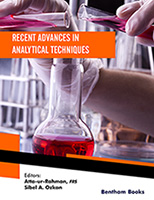Abstract
SHS investigation development is considered from the geographical and historical viewpoint. 3 stages are described. Within Stage 1 the work was carried out in the Department of the Institute of Chemical Physics in Chernogolovka where the scientific discovery had been made. At Stage 2 the interest to SHS arose in different cities and towns of the former USSR. Within Stage 3 SHS entered the international scene. Now SHS processes and products are being studied in more than 50 countries.
Abstract
Keywords:
Abnormal image, Artificial neural networks, Complete blood count, Data mining, Erythrocytes, Feature extraction, Hyperglycaemia, Hypoglycaemia, Hypotonic solutions, Liver cirrhosis, Mean corpuscular hemoglobin, Mean corpuscular hemoglobin concentration, Red blood cell, Texture analysis, Total leukocyte count, Ultrasonic kidney, Ultrasound, Ultrasound images, White blood cell, White light microscopy, Whole blood.
Recommended Chapters
We recommend

Authors:Bentham Science Books






